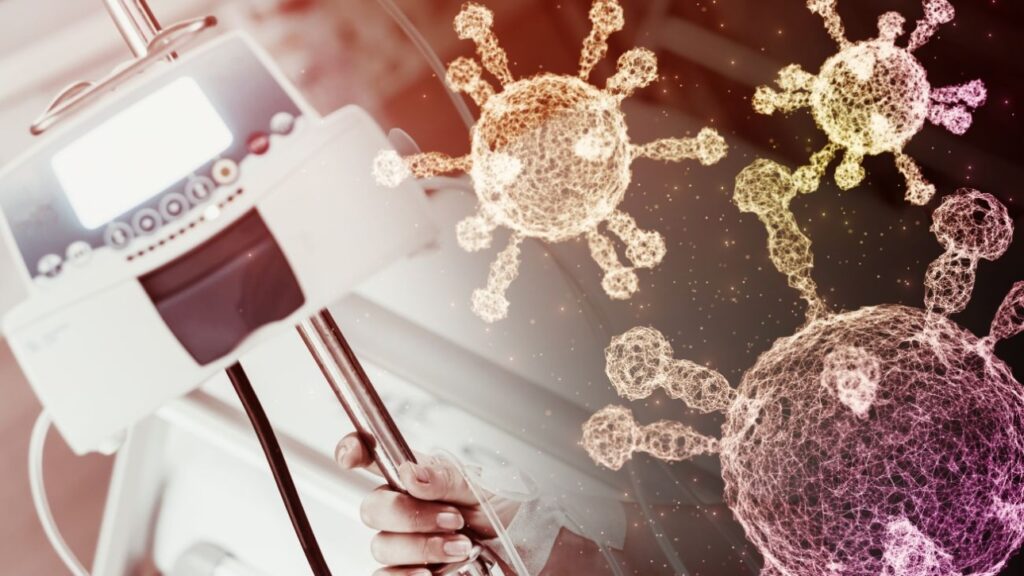Introduction
Thalassemia is a genetic blood disorder that affects the body’s ability to produce hemoglobin, the protein in red blood cells responsible for carrying oxygen throughout the body. This condition is part of a group of inherited blood disorders, and its effects can range from mild to severe, depending on the type and how it manifests in an individual. For those who have or are close to someone with thalassemia, understanding the various types, causes, and symptoms can help manage the condition effectively and improve quality of life.
What Is Thalassemia?
Thalassemia is caused by mutations in the genes responsible for hemoglobin production. Hemoglobin consists of two main parts: alpha globin and beta globin. In people with thalassemia, the body has trouble producing one of these types of globin chains, resulting in fewer and less effective red blood cells. This shortage can lead to anemia, or a deficiency of oxygen-carrying red blood cells, which is the primary symptom of thalassemia.
Types of Thalassemia
There are two primary types of thalassemia, each related to the specific globin chain that is affected. Within these two main categories, there are additional subtypes that vary in severity.
Alpha Thalassemia
- Overview: Alpha thalassemia occurs when there are mutations or deletions in the genes responsible for alpha globin production.
- Subtypes:
- Silent Carrier State: In this mild form, only one gene is affected, and individuals typically do not experience any symptoms.
- Alpha Thalassemia Trait (or Minor): With two affected genes, this trait can cause mild anemia. Many individuals are unaware they have it because symptoms are so mild.
- Hemoglobin H Disease: In this moderate-to-severe form, three of the four alpha genes are missing or mutated. This results in more significant symptoms, including chronic anemia and an enlarged spleen.
- Alpha Thalassemia Major (Hydrops Fetalis): The most severe form, in which all four alpha genes are affected, often leads to stillbirth or death shortly after birth if untreated.
Beta Thalassemia
- Overview: Beta thalassemia results from mutations in the genes responsible for producing beta globin chains.
- Subtypes:
- Beta Thalassemia Minor: This mild form occurs when one beta globin gene is mutated. It usually results in no or mild anemia and is often asymptomatic.
- Beta Thalassemia Intermedia: A moderate form where both beta genes are affected but not entirely dysfunctional. Symptoms are more pronounced, and individuals may require occasional blood transfusions.
- Beta Thalassemia Major (Cooley’s Anemia): The most severe form of beta thalassemia, which requires regular blood transfusions and ongoing treatment. Individuals with this condition may experience severe anemia, bone deformities, and delayed growth.
Causes of Thalassemia
Thalassemia is an inherited genetic disorder, meaning it is passed down from parents to children through genes. If both parents carry the gene mutation for thalassemia, there is a higher likelihood that their child will inherit a more severe form of the disease. Here’s how inheritance works:
- Carrier State: If only one parent carries the thalassemia gene, their child may inherit the thalassemia trait (minor), which usually causes mild or no symptoms.
- Inheritance of Severe Forms: If both parents carry the thalassemia gene, there is a 25% chance the child will inherit two copies of the mutated gene and develop a more severe form of thalassemia (major or intermedia).
Thalassemia is most common in people of Mediterranean, Middle Eastern, South Asian, and African descent, though it can affect anyone.
Symptoms of Thalassemia
The symptoms of thalassemia vary depending on the type and severity of the condition. Here are common symptoms associated with different forms:
Mild Thalassemia (Minor and Trait Forms)
- Mild anemia, which may lead to slight fatigue or weakness.
- Often asymptomatic, with diagnosis typically occurring only through routine blood tests.
Moderate to Severe Thalassemia (Intermedia and Major)
- Fatigue and Weakness: Severe anemia due to a shortage of healthy red blood cells leads to constant fatigue.
- Pale or Yellowish Skin (Jaundice): In some cases, the breakdown of red blood cells can lead to jaundice, resulting in a yellowish complexion.
- Delayed Growth and Development: Children with severe thalassemia often experience stunted growth and delayed puberty due to lack of sufficient oxygen in the blood.
- Bone Deformities: The body tries to produce more red blood cells in the bone marrow, which can lead to bone thickening, especially in the face and skull.
- Enlarged Spleen: Over time, the spleen works harder to remove damaged red blood cells, often leading to enlargement. This can further reduce the number of healthy red blood cells available.
- Frequent Infections: Due to the weakened immune system associated with severe anemia, individuals with thalassemia may be more susceptible to infections.
Diagnosis of Thalassemia
Diagnosis typically occurs through blood tests, which reveal anemia and other changes in red blood cells. Some common tests include:
- Complete Blood Count (CBC): This test measures the number of red blood cells and hemoglobin levels, helping to identify anemia.
- Hemoglobin Electrophoresis: A more specific test that analyzes the types of hemoglobin present in the blood, distinguishing between normal and abnormal types associated with thalassemia.
- Genetic Testing: Used to confirm the presence of thalassemia and to determine the specific gene mutations involved. Genetic counseling may also be recommended for families with a history of thalassemia.
Living with Thalassemia
While thalassemia can present significant health challenges, many people with the condition lead fulfilling lives. Managing thalassemia effectively often involves regular medical care, lifestyle adjustments, and emotional support.
- Medical Treatments: Those with moderate to severe thalassemia may require frequent blood transfusions and iron chelation therapy to manage iron overload, a common side effect of transfusions.
- Diet and Lifestyle: Proper nutrition, regular exercise, and avoiding high-iron foods can contribute to better overall health and help reduce complications.
- Support Networks: Connecting with support groups, either online or locally, can provide emotional support and practical advice from others who understand the challenges of living with thalassemia.
Conclusion
Understanding the types, causes, and symptoms of thalassemia is essential for anyone affected by the condition, directly or indirectly. Whether you’re a patient, caregiver, or concerned family member, staying informed about thalassemia can help in managing the disease effectively. From mild to severe cases, early diagnosis and ongoing care are key to improving quality of life and outcomes for those living with thalassemia.



